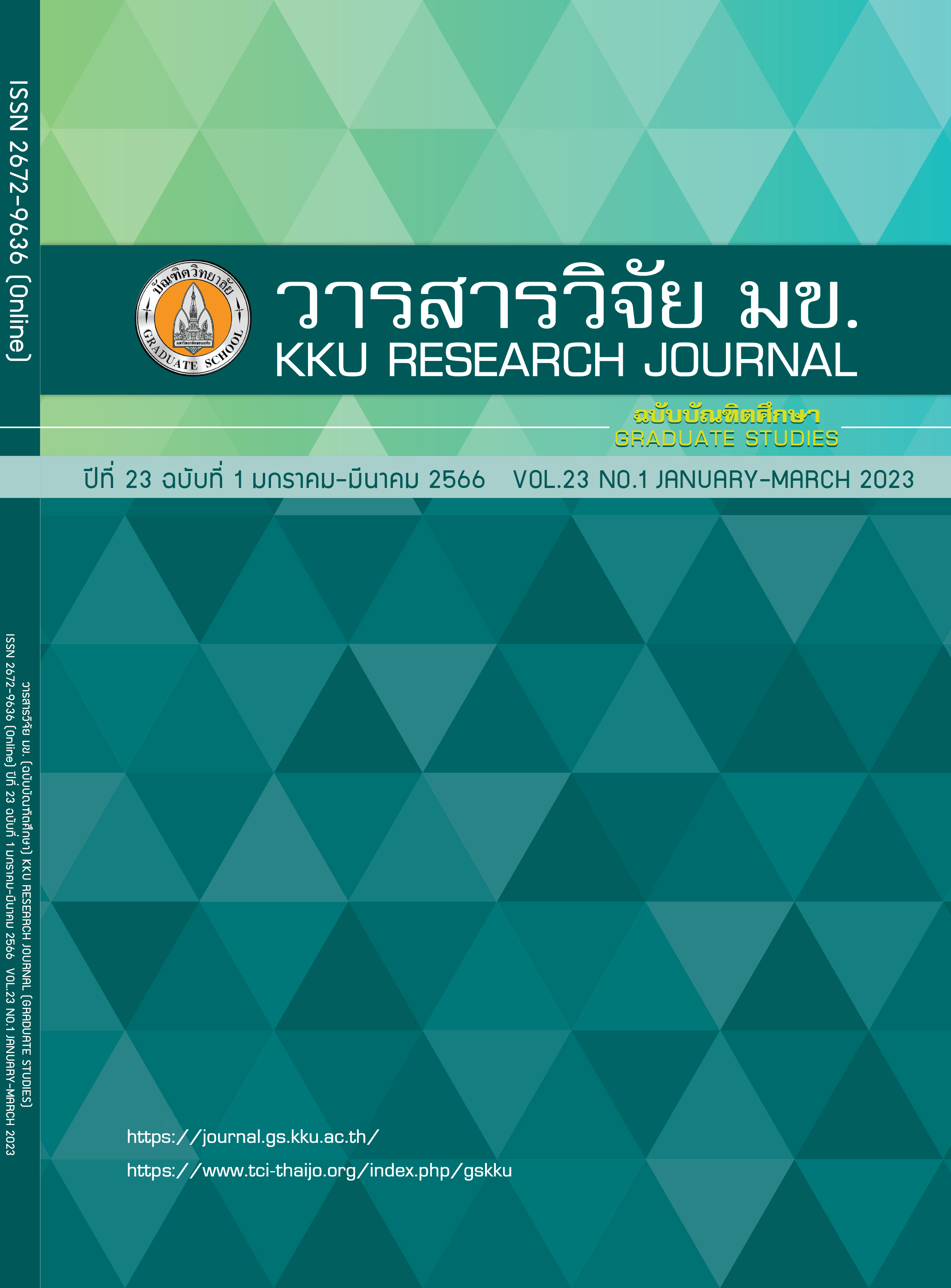Prevalence and Factors Associated with Maintenance of Home Rehabilitation Among Patients with Stroke by Caregiver in Rural Community, Khon Kaen, Thailand
Keywords:
Caregiver, Stroke, Maintenance of home rehabilitationAbstract
Stroke is a non-communicable disease (NCD) leading cause of death in Thailand. Stroke patients usually have some degree of disability that needs home rehabilitation. Caregivers’ knowledge and skills for patient care are important to appropriately provide care to assist stroke patients to prevent their complications. The purposes of this cross-sectional study were prevalence and factors associated with maintenance of home rehabilitation among caregivers of stroke patients in a Rural Community, Khon Kaen, Thailand to identify the problems of patient care for leading to the promotion of caregivers to have appropriate knowledge and skills for caring to prevent complications in patients. A study was conducted with 105 stroke patient’s caregivers from January 2018 to December 2019. The research instruments used in the study included five parts of questionnaires. Data of personal information and caregiver caring activities for their patients were analyzed with descriptive statistics and binary logistic regression. The results of this study demonstrated that 84.8 percent (95% CI, 77.77-91.75) of caregivers had maintained home rehabilitation. 60-year-old and older caregiver was statistically significantly associated with the maintenance of home rehabilitation (Adjusted OR 4.36, p-value <0.05, 95%CI 1.11-17.13).
References
Benjamin EJ, Muntner P, Alonso A, Bittencourt MS, Callaway CW, Carson AP, et al. Heart Disease and Stroke Statistics—2019 Update: A Report From the American Heart Association. Circulation. 2019 Mar;139(10).
Division of Non Communicable Disease. Number and mortality rate of non-communicable diseases in 2016 - 2018 [Internet]. Nonthaburi; 2019. Available from: http://www.thaincd.com/2016/mission/documents-detail.php?id=13653&tid=32&gid=1-020
Tejativaddhana P, Kitreerawutiwong N. Effectiveness of a Training Program for the Village Health Volunteers in Providing Community Care for Patients with Cerebrovascular Disease Using the Context-Based Learning (CBL) Approach. J Nurs Heal Care. 2014;32(1):87–96.
Health Administration Division. Guideline for Intermediate Care (Service Plan) [Internet]. 2019. Available from: https://phdb.moph.go.th/main/index/detail/30103
Mahmood A, Blaizy V, Verma A, Stephen Sequeira J, Saha D, Ramachandran S, et al. Acceptability and Attitude towards a Mobile-Based Home Exercise Program among Stroke Survivors and Caregivers: A Cross-Sectional Study. Int J Telemed Appl. 2019 May;2019:1–6.
Preston E, Dean CM, Ada L, Stanton R, Brauer S, Kuys S, et al. Promoting physical activity after stroke via self-management: a feasibility study. Top Stroke Rehabil. 2017 Jul;24(5):353–560.
Grau-Pellicer M, Lalanza J, Jovell-Fernández E, Capdevila L. Impact of mHealth technology on adherence to healthy PA after stroke: a randomized study. Top Stroke Rehabil. 2020 Jul;27(5): 354–368.
Phutrit S. Results of Rehabilitation Service for Sub-acute Stroke Patients between IPD-based, OPD-based and Home-based Service. Buddhachinaraj Med J. 2020;37(1):83–91.
Jurkiewicz MT, Marzolini S, Oh P. Adherence to a Home-Based Exercise Program for Individuals After Stroke. Top Stroke Rehabil. 2011 May;18(3):277–284.
Gunnes M, Langhammer B, Aamot I-L, Lydersen S, Ihle-Hansen H, Indredavik B, et al. Adherence to a Long-Term Physical Activity and Exercise Program After Stroke Applied in a Randomized Controlled Trial. Phys Ther. 2019 Jan;99(1):74–85.
Sit JW, Wong TK, Clinton M, Li LS, Fong Y. Stroke care in the home: the impact of social support on the general health of family caregivers. J Clin Nurs. 2004;13:816–824.
Kuptniratsaikul V. The Burden of Stroke on Caregivers at 1-year after Discharge: A Multicenter Study. J Thai Rehabil Med. 2018;28(1):8–14.
Miller KK, Porter RE, DeBaun-Sprague E, Van Puymbroeck M, Schmid AA. Exercise after Stroke: Patient Adherence and Beliefs after Discharge from Rehabilitation. Top Stroke Rehabil. 2017 Feb;24(2):142–148.
Namrat T, Jaroenyot J, Supapan T, Kulwong S, Khumboon W, Thanawiroon C. Satisfaction of the Rehabilitation Stroke Patients on the Services of Homeopathy as an Alternative Medicine at Sunpasitthiprasong Hospital, Ubon Ratchathani. Isan J Pharm Scienece. 2018;14(4):38–49.
Ogwumike O, Badaru U, Adeniyi A. FACTORS INFLUENCING ADHERENCE TO HOME-BASED EXERCISE BY STROKE SURVIVORS IN NORTH WESTERN NIGERIA. Int J Ther Rehabil Res. 2014;3(1):8.
Kitila S, Thammakun T, Chankong W. Factors Affecting Quality of Life of Stroke Patients at Sirindhorn National Medical Rehabilitation Institute. J Prapokklao Hosp Clin Med Educ Cent. 2019;36(2):105–114.
Wayne W. Biostatistics: A foundation of analysis in the health sciences (6th ed.). John Wiley&Sons Inc.; 1995.
Nualnetr N, Srikha D. Knowledge on the stroke and behaviors to reduce the risk of stroke among risk persons in Samliam Community, Muang District, Khon Kaen Province. J Med Technol Phys Ther. 2012;24(3):318–326.
Rattanaraj P, Sarakan K, Kotta P. Potential of Elderly Caregivers Associated with Isan Cultural Context. J R Thai Army Nurses. 2020;21(1):147–156.
Downloads
Published
Issue
Section
License
Copyright (c) 2023 KKU Research Journal (Graduate Studies)

This work is licensed under a Creative Commons Attribution-NonCommercial-NoDerivatives 4.0 International License.



